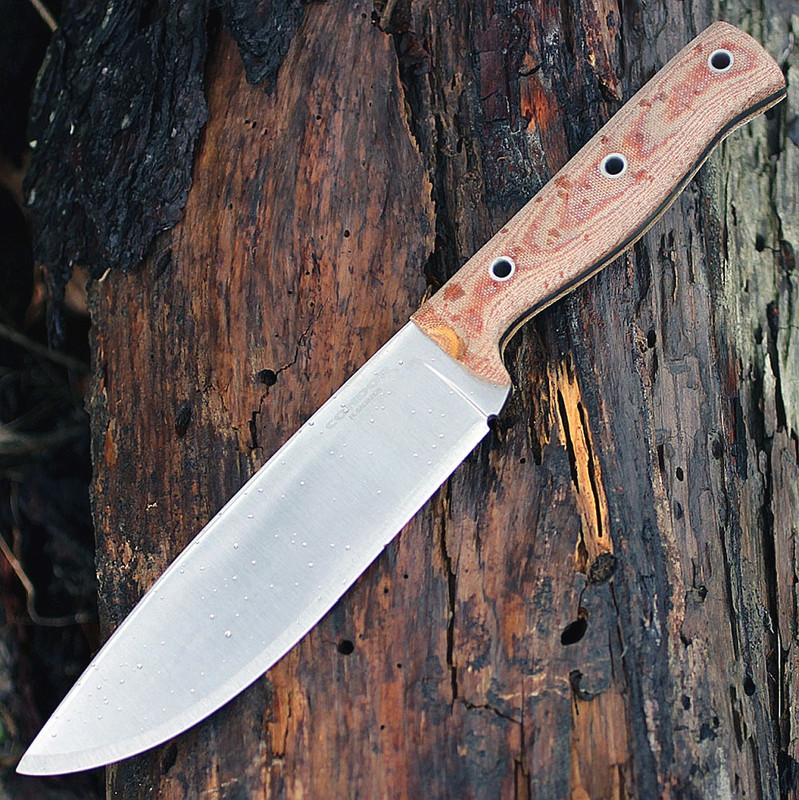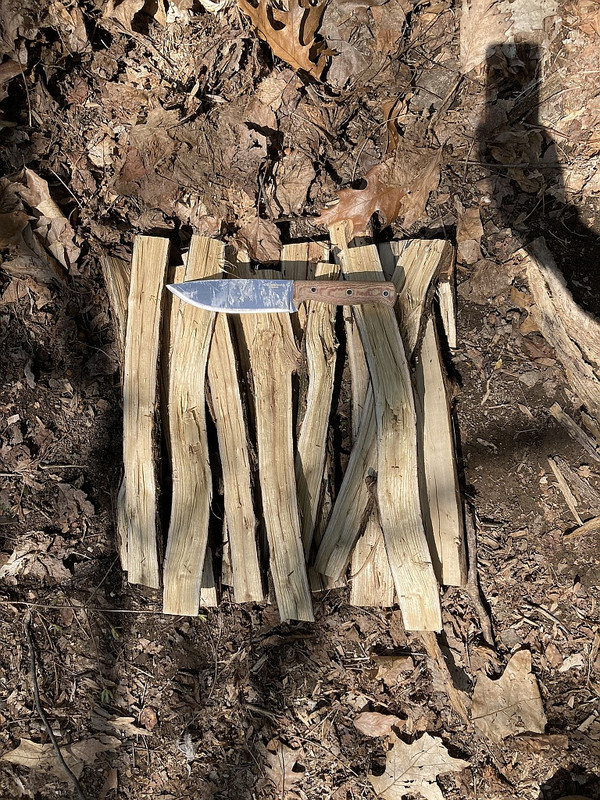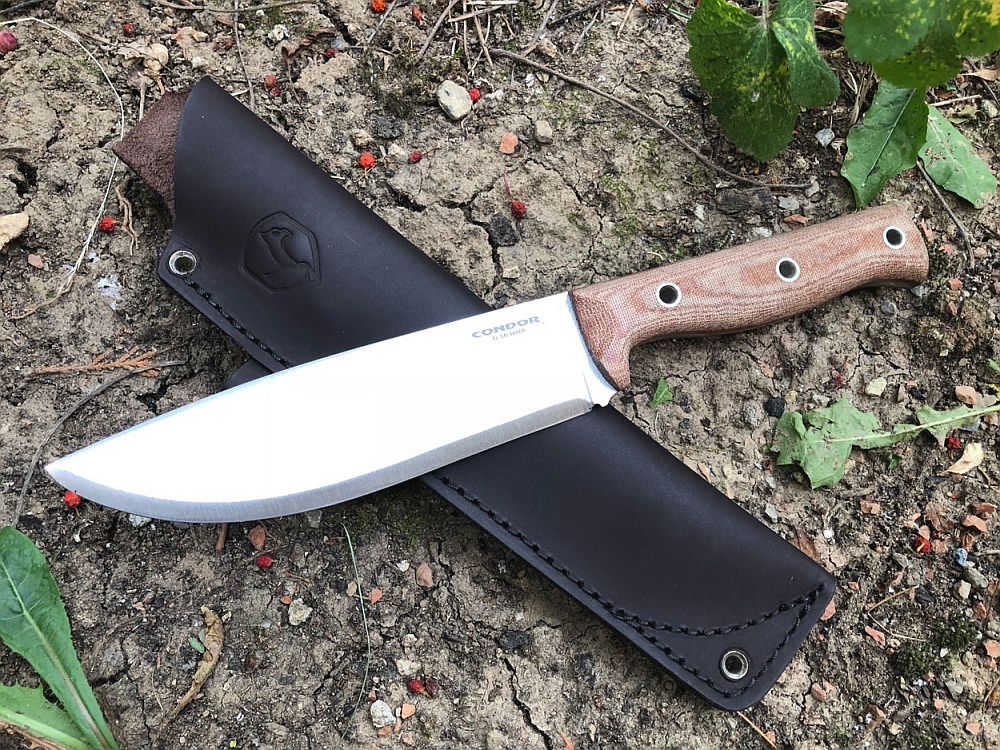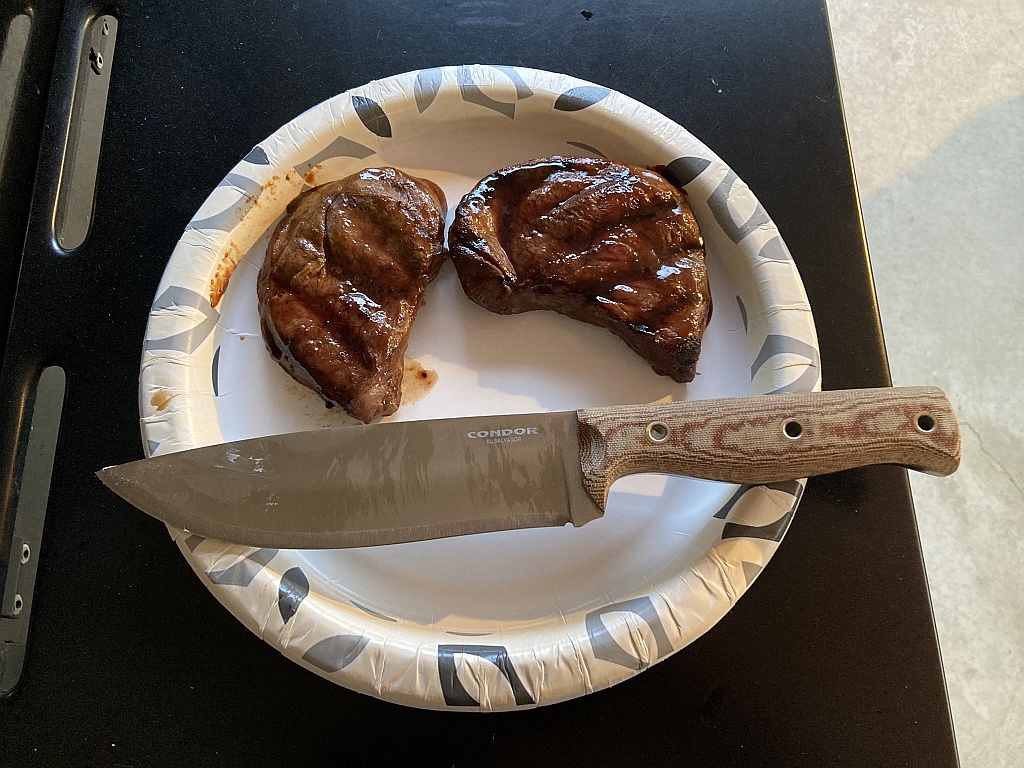
Bland, generic, unimaginative, all adjectives that could be used to describe the Condor Low Drag knife. Even the name is dull, but does mundane mean bad too? Can something this plain be worthwhile? That's what we're going to find out, before undertaking that journey here are the specs...
* Blade Length: 6.6"
* Overall Length: 11.6"
* Thickness: 0.2"
* Material: 1075 High Carbon Steel
* Finish: Polished
* Grind: Full Flat, Secondary Bevel
* Handle: Micarta
* Sheath: Leather Pouch
* Weight: 12 Oz
* Price: $90
There's certainly nothing particularly noteworthy; a low grade carbon steel, micarta scales and a leather sheath. Sounds like a 100 other knives. This one is designed by Joe Flowers though, a dude with a tremendous amount of dirt time in just about every corner of the world. So why is the Low Drag knife so nondescript then? Perhaps it doesn't need to be anything else.
The knife world is full of exotic steels, unique blade shapes, variable edge geometries and scales made from countless different materials. What if all you need is a knife, one that just seems to work? What if the name Low Drag is a reference to low maintenance, a beater you can do with whatever you'd like and not really worry about it? In some respects this knife resembles the man who designed it, unpretentious.
Mine came pretty sharp, which is about all I've ever gotten from Condor (let's face it, their name is not synonymous with quality control). The edge geometry worked well for carving, despite the Low Drag's 6.6" blade try sticks were fairly easy to create.

I deliberately grabbed a crooked stick, I wanted to see what a large knife could do with material that wasn't ideal.
Two things contributed to that; for some inexplicable reason it doesn't feel as heavy in the hand as the weight suggests it might, and the balance is pretty darn good. Centered right where the scales meet the blade, it's not a chore to move this knife around and do fairly intricate work with.
Throw larger tasks at it and you get the sense it feels more at home. Using the Low Drag to hack at small tree branches - up to thumb size - shows its true strength, it ate up that chore. Once you've separated the branch from the trunk it's a breeze to lop off all the smaller branches. Here the advertised weight works to its advantage, yet the Low Drag doesn't feel unwieldy.
Knives with a full flat grind don't tend to be battoning beasts, but with the thick blade stock and secondary bevel the Low Drag did an admirable job.

The 1075 steel did show stains after battoning wood with pitch, no matter what I tried I couldn't get them out. If you're OK with "beauty marks" that won't be a problem for you. The blade did dull rather quickly, however a few minutes with a ceramic rod and then a kitchen steel when I got home brought it back to factory original with little effort. When you head out in the field make sure you have something in your pocket for quick touch ups, 1075 is not going to last long before it needs some attention. It comes back fast though, it's not a chore to do field tune ups.
The spine is sharp, but it's not at the same time. Huh? Dragging (see what I did there?) it across the side of your index finger at a 45° angle you can feel the edge. It's not as drastic as what you get on something from LT Wright, but you know it's there. That could leave you thinking it's merely serviceable, yet use it on a ferro rod and the thing throws sparks like nobodies business. That's an interesting dichotomy; I like a wickedly sharp spine until I'm doing push cuts, then my thumb hates me for buying that type of knife. The Condor Low Drag strikes a nice balance; sharp enough to make a ferro rod usable, but not so sharp as to kill the 'ol thumb.
Like the knife itself, the sheath Condor uses appears to be ordinary. A prototypical bushcraft leather pocket style, its semi-deep carry holds the Low Drag pretty well (roughly half the handle sticks out).

Sadly it's not form fitting, turn the sheath over and shake once or twice and the knife will slide right out. But it's snug enough, unless you're doing hand stands in the bush you're not likely going to lose your blade. The leather is fairly thick, with rivets in strategic locations. That's probably a good thing as it's only single stitched. There is a welt, which I always like to see. The belt loop is only held on with a rivet though, no stitching. That's a bad idea. There's no drain hole in the bottom either, another dubious choice. There's a ferro rod loop, but it's not wide enough to accommodate the typical 3/16" rod.
The handle shape is representative of the breed, similar to what I see on a lot of field knives. There are indents for your index finger and pinkie, with a subtle swell under your middle and ring fingers. A gentle birds beak at the tail end is there to help your grip when choking back, at the front there's a pronounced finger guard to keep your hand off the blade. It would take some serious doing to slide your fingers past this thing.
Thankfully Condor didn't smooth the micarta too much, ala Bark River, they left enough texture to make the Low Drag feel secure in the hand. Even when my palms were sweaty and dirty the knife didn't want to slip out of my grasp. That's a good thing for the obvious reason, but there's another less obvious one; for those of us who wear XL gloves the handle is just a touch too small. Not front-to-back, that dimension is fine, but top-to-bottom and side-to-side could use a bit more heft. That might be nit-picking though, for the majority of people this handle will be more than fine.
What I found is the shape and finish were a very good combo, even after a long hard day of use I don't have any real complaints. There were no hot spots, no rough edges, nothing that I would consider a show stopper. This is the first Condor knife I've owned where the scales and tang actually aligned. Scratch your fingernail from tang to scale and nothing caught at any point, the integration between steel and micarta was virtually seamless.
As is my wont, when I get home from a long day in the woods I use the knife to prepare and eat a meal. To me that completes the circle. The Condor Low Drag is a hoss of a knife, so it's certainly no substitute for a chef or steak knife, but it's workable.

Those are venison chops my friends, eat your heart out
There is a distal taper - which always helps - but the blade is rather long, even if you use just the front portion your hand is still quite a distance from the part doing the cutting. Between the distance and angle it's rather awkward, but usable.
For a pretty beefy knife it was a faithful companion that day. I'm not sure how it would be at field dressing or game processing (unfortunately my snares came up empty that day) but as a general purpose woods knife - or dare I say it, a one tool option - it worked quite well. If you're looking for a knife without pretense, check out the Condor Low Drag.
Last edited:
